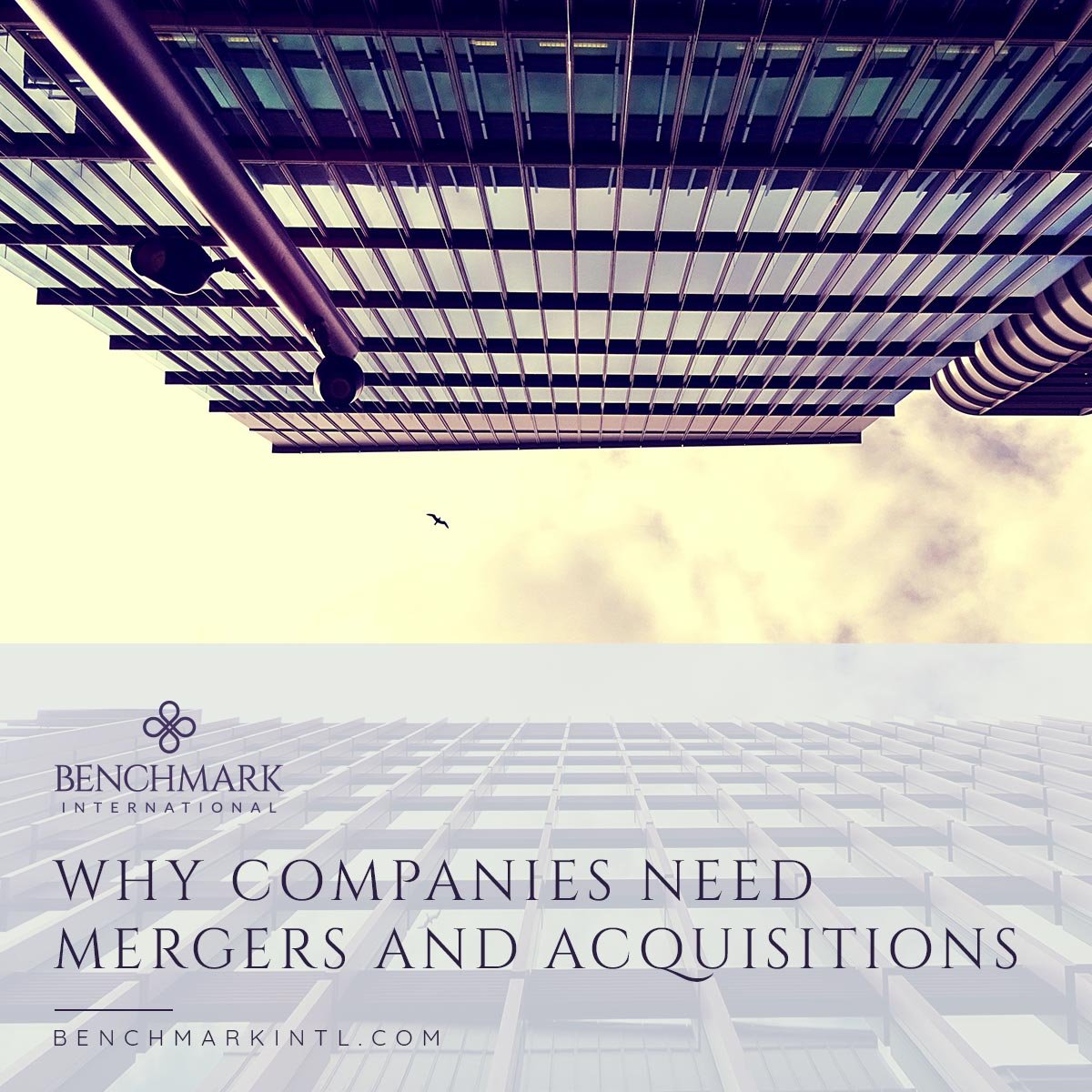
There are many reasons that mergers and acquisitions are critical tools for companies of all sizes, some of which may not even be fully realized by business owners. Ultimately, it’s all about achieving positive results for the business by making strategic moves that make sense, all depending upon what the fundamental goal (or goals) may be. For companies in the lower to middle market, M&A can be an extremely effective solution for a variety of purposes.
To Grow
An M&A transaction is one of the most effective ways to growing a company and its market share. Benefits typically include increased productivity and sales, strengthened brand loyalty, and improved cost synergies. If a company ends up having a larger share of the market as a result of a merger or acquisition, they can usually raise their prices and drive more profits.
Expanding the business into new markets, and especially into new geographical regions, can easily create growth and quickly. If you can identify markets where there is a need for your offering or an area that is currently underserved, you can grow your business much faster than relying on traditional sales or marketing strategies to take hold. Additionally, doing this through a merger or acquisition is easier than trying to do it on your own, because it takes time to penetrate a market in which you have no experience (especially in a cross-border deal). This growth can also be achieved by acquiring new technologies or intellectual property that offers a competitive edge.
To Edge Out the Competition
A merger or acquisition is a common way that companies grow their market share. They simply eliminate the competition by purchasing it or merging with said competition. Consolidation is a major driver behind M&A deals, especially in today’s fast-paced world that revolves heavily around technology. Improving tech capabilities and innovation is a massive priority for most businesses, and M&A transactions are one of the smartest ways to achieve these goals.
To Boost Supply Chains
In some cases, a company can acquire one of its suppliers or distributors, and eliminate an entire layer of costs. This is known as a vertical merger. By buying a supplier, a business can cut spending on the margins that the supplier was adding to its costs. Buying a distributor usually allows a company to ship its products at a lower cost. As these changes reduce operating costs for the company, it can also translate to lower costs for customers, which can result in higher sales. Vertical mergers also give the acquiring company more control over supply, so there is no longer a risk of price gouging by suppliers. These circumstances can vary based on the type of business and the sector in which it operates. It may make more sense for one company to acquire a supply chain than another.
To Create Economies of Scale
The idea of economies of scale is all about production efficiencies. When two companies merge, their strengths are pooled. This tends to lower operating costs and boost overall performance—known as creating cost synergies. The bigger the business, the larger the savings usually are. Companies that operate within industries that carry high fixed costs and require large amounts of capital can benefit greatly from such an arrangement. These business sectors often include airlines, auto manufacturers, and pharmaceutical companies. Economies of scale can work both internally based on management decisions and externally to address more industry-wide-specific factors.
To Acquire Key Talent
Talent is at the root of a company’s success. In some cases, businesses can face talent shortages that can obstruct their ability to grow while restricting the ability to serve existing customers. A company that is in dire need of talent can purchase another company with the right type and amount of talent to fill the hole. This can also serve as a much faster way to acquire needed talent instead of trying to develop it organically.
At the same time, mismanagement of talent integration can result in serious problems following a transaction. So, it is important to remember that while gaining new talent is important, it is just as important to make sure they are properly integrated post-merger. Strategies need to be in place regarding how to retain critical people and how to manage the employee integration process in a way that mitigates disruption, anxiety, and miscommunication.
To Increase R&D
An acquisition often enables a company to make more investment into the areas of research and development. Research has shown that M&A transactions strongly increase the incentive of companies to conduct R&D. Also, successful innovation makes companies more attractive acquisition targets, and exiting through strategic sales is an important motivation to spend on R&D. This tends to be less so for larger companies, as they may simply buy smaller firms to gain their technology, skipping the need for R&D altogether.
R&D also varies positively with sector demand and the expected probability that a company is an acquisition target. Small companies have greater bargaining power and higher inside-asset liquidity in the M&A market, which leads to more R&D investment by these companies. By being able to capture a larger fraction of the acquisition surplus offers incentives for companies to increase investment in R&D to increase their chances of being acquired.
To Gain Influence
In some sectors, such as media, gaining a greater stake can mean gaining social or political influence. The more publicity a company owns, the more of a voice they have in the public arena. An M&A transaction also has the power to change the public perception of a particular business if it has struggled with recent bad press. If a company with a more positive image acquires the business, it can potentially improve its public perception.
To Avoid Bankruptcy
Widely known as distressed M&A, this strategy can prevent a company from going bankrupt and being liquidated. A company that is doing well may want to buy out a company that’s deteriorating with the goal of turning it around and making it profitable. This is something we may see more of following the COVID-19 pandemic, as many businesses struggled to keep their heads above water.
Studies show that M&A in bankruptcy is more likely when the cost of financing a stand-alone reorganization is too expensive relative to the cost of selling the company’s assets to a buyer with internally generated funds or lower capital costs.
Are You Ready for M&A Solutions?
If you are considering selling or growing your company, our M&A experts at Benchmark International would love to hear from you. Let’s discuss how we can make great things happen.
Americas: Sam Smoot at +1 (813) 898 2350 / Smoot@BenchmarkIntl.com
Europe: Michael Lawrie at +44 (0) 161 359 4400 / Lawrie@BenchmarkIntl.com
Africa: Anthony McCardle at +27 21 300 2055 / McCardle@BenchmarkIntl.com
ABOUT BENCHMARK INTERNATIONAL
Benchmark International’s global offices provide business owners in the middle market and lower middle market with creative, value-maximizing solutions for growing and exiting their businesses. To date, Benchmark International has handled engagements in excess of $7B across various industries worldwide. With decades of global M&A experience, Benchmark International’s deal teams, working from 14 offices across the world, have assisted hundreds of owners with achieving their personal objectives and ensuring the continued growth of their businesses.
Website: http://www.benchmarkintl.com
Blog: http://blog.benchmarkcorporate.com
 Benchmark International
Benchmark International  Benchmark International
Benchmark International 






